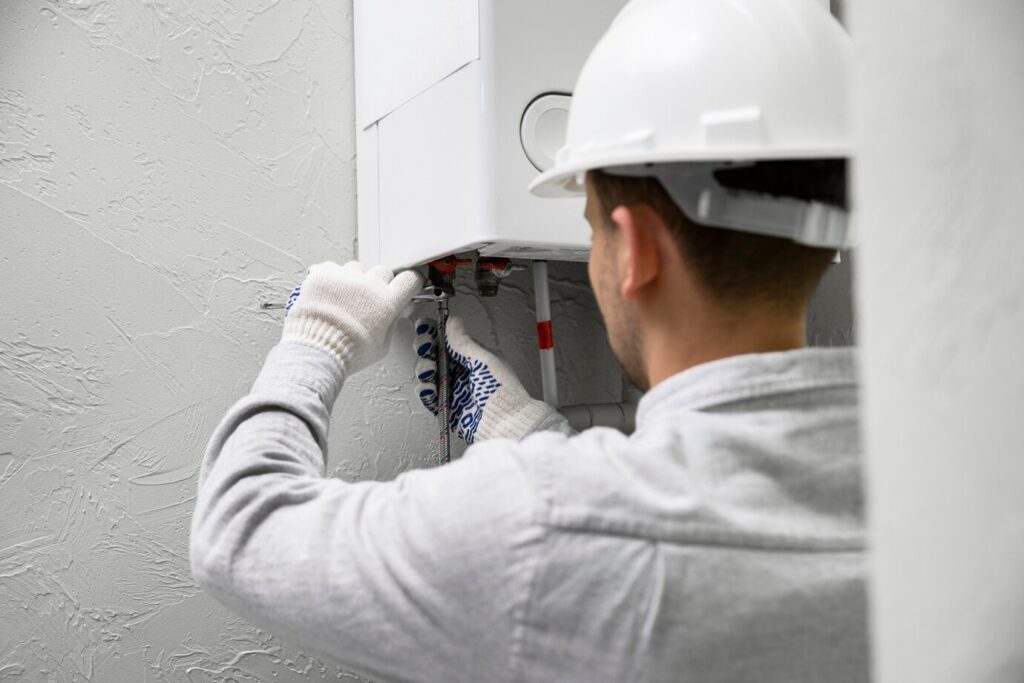
When it comes to heating an older home, selecting the most efficient system is crucial for comfort, sustainability, and cost-effectiveness. As the winter chill settles in, homeowners are often faced with the dilemma of choosing a heating solution that not only meets their needs but also preserves the character and integrity of their historic abode. In this comprehensive guide, we delve into the various options available and explore the pros and cons of each, helping you make an informed decision tailored to your unique circumstances.
Retrofitting Radiant Floor Heating: Embracing Timeless Comfort
Understanding Radiant Floor Heating
Radiant floor heating is a luxurious yet efficient heating solution that involves installing heating elements beneath the floor surface to radiate heat upwards, providing consistent warmth throughout the room. Unlike traditional forced-air systems that rely on convection currents to circulate heated air, radiant heating operates on the principle of thermal radiation, ensuring even distribution of heat without the need for ductwork or vents.
How Radiant Heating Works
At its core, radiant floor heating utilizes either electric resistance cables or water-filled pipes to generate heat. Electric systems rely on heating cables or mats installed beneath the flooring, while hydronic systems circulate hot water through a network of tubing embedded within the floor. As the heated surface warms up, it radiates heat upwards, warming objects and occupants in the room directly, resulting in a comfortable and uniform temperature without the uneven hot or cold spots often associated with traditional heating systems.
Benefits of Radiant Floor Heating in Older Homes
For older homes with historic charm and architectural significance, radiant floor heating offers a discreet and efficient heating solution that preserves the integrity of the space. Unlike bulky radiators or ductwork, radiant heating systems remain hidden beneath the floor, allowing homeowners to enjoy uninterrupted views and layouts while staying warm and cozy during the colder months. Additionally, radiant heat is known for its gentle warmth, eliminating the drafts and dry air associated with forced-air systems, thereby enhancing indoor comfort and air quality.
Installation Process for Retrofitting Radiant Floor Heating
Assessing Feasibility and Compatibility
Before embarking on a radiant floor heating project, it’s essential to assess the feasibility and compatibility of the system with your existing structure and flooring materials. While radiant heating can be installed in various floor types, including tile, stone, hardwood, and even carpeting, certain factors such as subfloor composition, insulation levels, and floor height may impact the installation process and overall performance of the system. Consultation with a qualified heating contractor or structural engineer is recommended to determine the suitability of radiant floor heating for your home.
Conducting Necessary Structural Modifications
Depending on the layout and condition of your home, retrofitting radiant floor heating may require structural modifications to accommodate the installation of heating elements and distribution piping. This may involve removing existing flooring materials, such as hardwood or tile, to access the subfloor and install the necessary components. In some cases, additional insulation or thermal barriers may be required to optimize the efficiency and performance of the radiant heating system, especially in older homes with minimal insulation or uneven floor surfaces.
Cost Considerations and Long-Term Savings of Radiant Floor Heating
While the upfront cost of installing radiant floor heating may be higher compared to conventional heating systems, the long-term benefits and energy savings often outweigh the initial investment. Radiant heating systems operate at lower temperatures, resulting in reduced energy consumption and lower utility bills over time. Additionally, radiant heat is known for its efficiency and comfort, allowing homeowners to maintain a consistent temperature throughout the home without excessive energy usage or temperature fluctuations. With proper maintenance and care, radiant floor heating can provide reliable warmth and comfort for decades, making it a worthwhile investment for older homes seeking efficient heating solutions.





